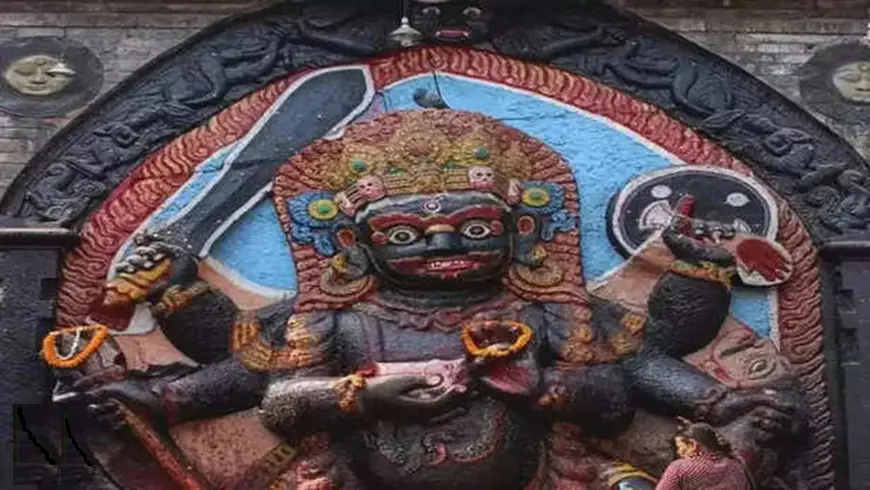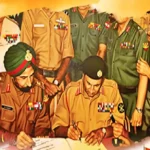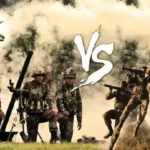
Kaal Bhairav
The powerful and transformative nature of Ashta Bhairavas, the eight manifestations of Lord Kaal Bhairava, is deeply revered in the rich tapestry of Indian spirituality. As a fierce yet compassionate aspect of Shiva, Bhairava embodies the cosmic force that dissolves illusions and protects devotees. This article delves into the individual significance of each of the Ashta Bhairavas, offering insights relevant to the spiritual journey of young to middle-aged Indian seekers.
Understanding the Cosmic Dissolver: The Essence of Bhairava(Ashta Bhairavas)
Bhairava, often perceived as a formidable deity, is understood within Shaivism as the very embodiment of Kala – time – and consequently, Mahakala, the ultimate reality that engulfs all transient forms. It is through this all-encompassing nature that Bhairava acts not out of mere wrath, but as a sacred purifier. Falsehood and ego are annihilated by this divine force, paving the way for the unveiling of profound truths about existence. Among the diverse representations of Bhairava, the Ashta Bhairavas hold a special place, each serving as a guardian of specific directions and embodying crucial stages in spiritual evolution. These eight forms represent the diverse energies required for profound inner transformation.
The Eight Manifestations: Guardians of Direction and Inner Growth
The Ashta Bhairavas are not merely static figures; they are dynamic forces that actively guide and influence the spiritual aspirant. Each of these eight Bhairava forms is associated with a specific direction, a unique consort, a symbolic vahana (mount), and distinct weapons that represent their power and purpose.
1. Asithanga Bhairava: Igniting Inner Awareness
- Direction: East
- Consort: Brahmani
- Vahana: Swan
- Weapons: Sword, Skull, Trident, Drum
As the guardian of the East, Asithanga Bhairava is seen as the initial spark of inner awakening. The swan, his chosen mount, is a potent symbol of Viveka, the discriminative wisdom that allows one to distinguish between truth and illusion. The weapons wielded by Asithanga signify the necessary destruction of ego and the subsequent awakening of consciousness. By those who seek clarity, mental purification, and the strength to embark on their spiritual path, Asithanga is invoked. Inertia and self-doubt are dispelled through his grace, empowering the seeker to tread the path of Jnana (knowledge) and Tapasya (austerity).
2. Ruru Bhairava: Silencing the Darkness of Ignorance
- Direction: Southeast
- Consort: Maheshwari
- Vahana: Ox
- Weapons: Trident, Drum, Noose, Goat
Tamas, representing darkness, inertia, and ignorance, is silently destroyed by Ruru Bhairava’s unwavering strength. Aggression is not his characteristic; instead, a firm resolve and spiritual discipline are embodied by him. The ox, his vahana, symbolizes determination, moving steadily towards liberation. Control over the senses is inspired by his presence, and the aura is cleansed of laziness and confusion. In the stillness of meditation, the truth that discipline is not restrictive but liberating is whispered by Ruru.
3. Chanda Bhairava: The Fiery Catalyst of Transformation
- Direction: South
- Consort: Kaumari
- Vahana: Peacock
- Weapons: Sword, Trident, Skull Cup, Mace
The transformative power of fire is embodied by Chanda Bhairava. The peacock, his mount, which is known for consuming poisonous snakes, symbolizes the transmutation of lower instincts into divine energy. Inner cleansing through trials, suffering, and intense experiences is represented by this form of Bhairava. Courage during personal crises is granted through his worship. It is through the fires of inner conflict that the ego is burned away, allowing for a renewed emergence, much like a phoenix rising from the ashes, as Chanda reminds us.
4. Krodha Bhairava: The Righteous Defender of Dharma
- Direction: Southwest
- Consort: Vaishnavi
- Vahana: Eagle (Garuda)
- Weapons: Conch, Chakra, Mace, Sword
Righteous anger, wielded to protect dharma and truth, is channeled by Krodha Bhairava. His mount, Garuda, pierces through deception with unwavering vision. The lesson imparted by Krodha is that anger, when aligned with justice, serves a restorative, not destructive, purpose. Inner and outer enemies, particularly those embodying deception, injustice, and self-sabotage, are given the power to be overcome. Like a divine warrior, clarity, decisive action, and courage are championed by him.
5. Unmatta Bhairava: Transcending Duality Through Divine Ecstasy
- Direction: West
- Consort: Varahi
- Vahana: Horse
- Weapons: Trident, Dagger, Drum, Skull
Appearing as one intoxicated by divine ecstasy, Unmatta Bhairava teaches that a higher intelligence exists beyond the realm of mere logic. Liberation from structure, convention, and ego is found in his apparent madness. The horse, his vahana, symbolizes untamed, boundless energy. By worshipping Unmatta, societal conditioning is dissolved, granting access to a space of unfiltered spiritual intuition. Higher truths, often incomprehensible to the ordinary mind, are whispered by him.
6. Kapala Bhairava: Witnessing the Cycle of Death and Rebirth
- Direction: Northwest
- Consort: Indrani
- Vahana: Elephant
- Weapons: Sword, Trident, Skull, Mace
Mortality and detachment are the domains of Kapala Bhairava. The skull (Kapala) he carries serves not as a morbid symbol but as a potent reminder of the impermanent nature of all things. His elephant mount signifies memory and the continuity of karma. Sacred cremation grounds, where the ego is symbolically burned and the soul undergoes rebirth, are under his guardianship. Fearlessness of death and acceptance of impermanence are cultivated through his worship.
7. Bhishana Bhairava: Confronting the Terrifying Truth Within
- Direction: North
- Consort: Chamundi
- Vahana: Lion
- Weapons: Trident, Sword, Skull, Club
Terror is evoked by Bhishana Bhairava not through harm, but through the stark revelation of truth. His lion mount represents valor and majesty. Seekers are compelled by him to confront the uncomfortable truths residing within. Illusions, spiritual pride, and false humility are shattered by his presence. His path, though challenging, is undeniably authentic. The raw, primal force of truth, one that cannot be ignored or compromised, is accessed through him.
8. Samhara Bhairava: The Ultimate Dissolver of Limitations
- Direction: Northeast
- Consort: Narasimhi
- Vahana: Dog
- Weapons: Trident, Drum, Noose, Skull Cup
The final form, the culmination of all endings, is Samhara Bhairava. The dissolution of identity, karma, mind, and even the individual seeker is his essence. His dog mount symbolizes loyalty and the necessary confrontation with the shadow self. Transcendence of the cycles of rebirth is sought through his worship. Liberation, not destruction, is Samhara’s act. He is the remover of the final veil, leading to ultimate freedom.
The Inner Battlefield: Philosophical Significance of the Ashta Bhairavas
Each of the Ashta Bhairavas presides over a specific aspect of the internal struggles faced on the spiritual path:
- Asithanga: Ignorance
- Ruru: Inertia
- Chanda: Desire
- Krodha: Righteous anger
- Unmatta: Mind
- Kapala: Fear of death
- Bhishana: Illusion
- Samhara: Attachment to existence
These are not external demons to be fought, but rather internal knots that bind the seeker. The Ashta Bhairavas serve as symbolic keys to untie these intricate knots, ultimately leading to the unveiling of the infinite consciousness that resides within each individual.
Bhairava: A Mirror to the Soul
To journey with the Ashta Bhairavas is to embark on a path of unwavering truth, profound fearlessness, and ultimate liberation. Reverence, not fear, is the appropriate response to these powerful deities, for they strip away the superficial layers only to clothe the seeker in the garment of eternity. Through meditation, mantra, and the profound stillness of silence, the realization dawns that Bhairava is not an external entity but an intrinsic aspect of the self – the fierce grace that propels the soul to transcend the limitations of time and embrace the infinite.
(Om Hreem Bhairavaya Namaha)
Find more related content about
WhatsApp Reply to Boss Leads to Rs. 56 Lakh Loss
Indian Civic Sense Abroad: Loud Family on Finland Train Sparks Debate










